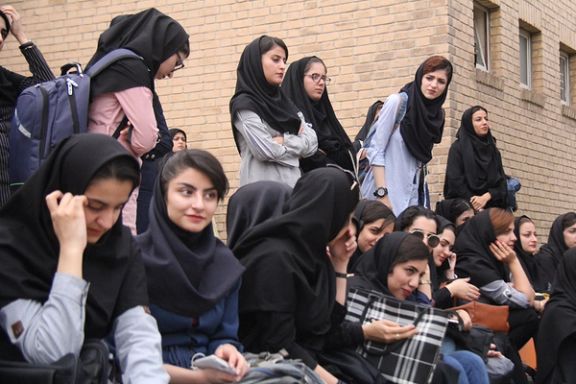The poll, conducted by ISPA, the polling agency of the Iranian Students News Agency (ISNA), in May 2024 and recently released, surveyed students at government-owned universities in Iran. It covers a range of topics, including students' use of messaging services and social networks, as well as their consumption of music, movies, and TV series.
Based on the ISPA poll, 79.5 percent of Iranian students use messaging services and social media daily. Among the other daily activities of students are listening to the music (66%), spending time with friends (57.6%), athletic activity (21%), listening to podcasts (19.4%), watching movies and TV series (18.1%), reading books and eBooks (18%), and playing computer games (13.3%).
According to the poll, Iranian students spend an average of 233 minutes (nearly four hours) on social media and messaging services every day.
Telegram is the most popular messaging and social media platform among Iranian students, with 89.5% using it daily. The usage of other platforms is as follows: Instagram (85.7%), WhatsApp (66.7%), YouTube (50.4%), Ita (38.4%), Rubika (29.6%), Twitter/X (23.5%), Baleh (20.8%), Soroush Plus (14.8%), Facebook (10.9%), TikTok (9.7%), Clubhouse (5%), and Threads (4.9%).
The top four social media platforms, along with many others, are foreign services banned by the Iranian government and blocked by internet censors. To access these platforms, users rely on VPNs and other tools to bypass censorship. In contrast, Iranian platforms are not widely trusted, as the government maintains full control over data traffic. Iranians primarily use these domestic platforms for practical purposes, such as accessing government services, paying bills, and banking. This lack of trust explains why foreign platforms remain far more popular than the government-controlled Iranian social media sites.
Another ISPA poll conducted in September revealed that social media and messaging platform usage among the general Iranian population differs from that of university students. Instagram is the most popular platform among the broader population, with 56% of users, followed by Telegram (39.3%) and WhatsApp (33.3%). Among Iranian platforms, Ita and Rubika are the most frequently used, each with over 28% of users, excluding university students.
The poll results on the Iranian students' news consumption are inconsistent with most other studies including the one conducted by Gamaan Polling Agency in the Netherlands in 2021.
ISPA's poll indicates that Iranian websites, news agencies, and local social media platforms are the primary news sources for most Iranians. However, other studies, including the Gamaan poll, show that international social media platforms are Iranians' top source of news.
According to ISPA’s poll of 2,250 Iranian students, over 25% get their news from domestic social media platforms, over 20% from international social media, 12% from state TV, 8% from foreign-based satellite TV, nearly 5% from friends and peers, and less than 1% from newspapers.
In contrast, a Gamaan poll of over 27,000 individuals found that Iran International TV (33%) and Manoto TV (30%)—both London-based—are the most popular media outlets in Iran. The poll revealed that 92% of respondents rely on social media for news about Iran and the world, 41% on satellite TV, 32% on news websites, and 14% on Iranian state television for daily updates.









